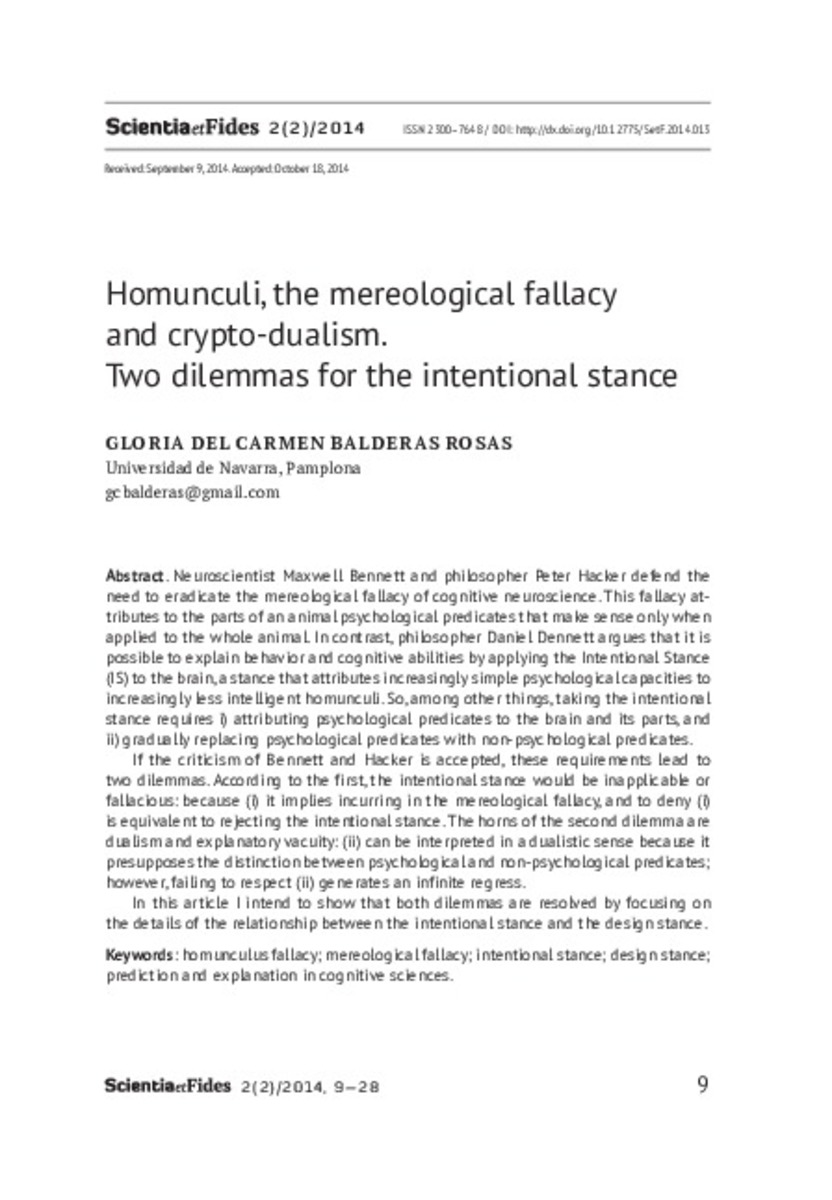Homunculi, the mereological fallacy and crypto-dualism. Two dilemmas for the intentional stance
Fecha de publicación :
2014
Editorial :
Universidad Nicolás Copérnico de Torun
Cita:
Balderas-Rosas, Gloria del Carmen. “Homunculi, the mereological fallacy and crypto-dualism. Two dilemmas for the intentional stance”, Scientia et Fides, Vol. 2, n. 2, 2014, pp.9-28.
Aparece en las colecciones:
Estadísticas e impacto
0 citas en

0 citas en

Los ítems de Dadun están protegidos por copyright, con todos los derechos reservados, a menos que se indique lo contrario.








